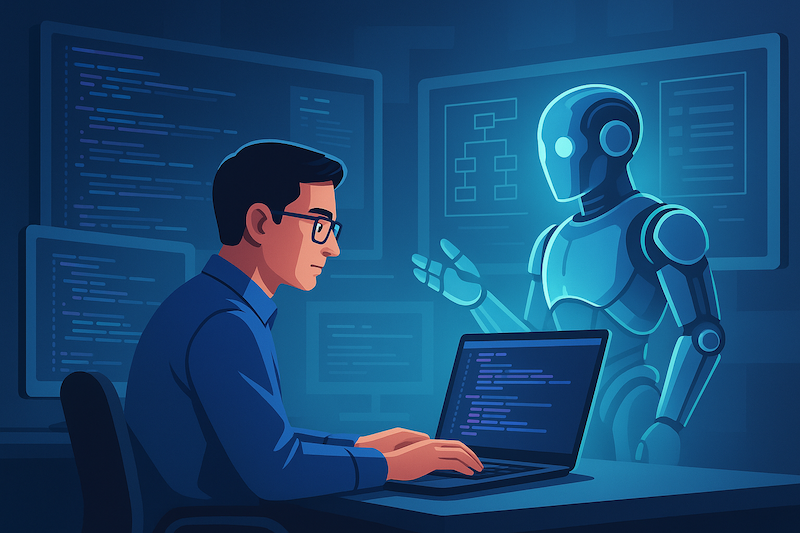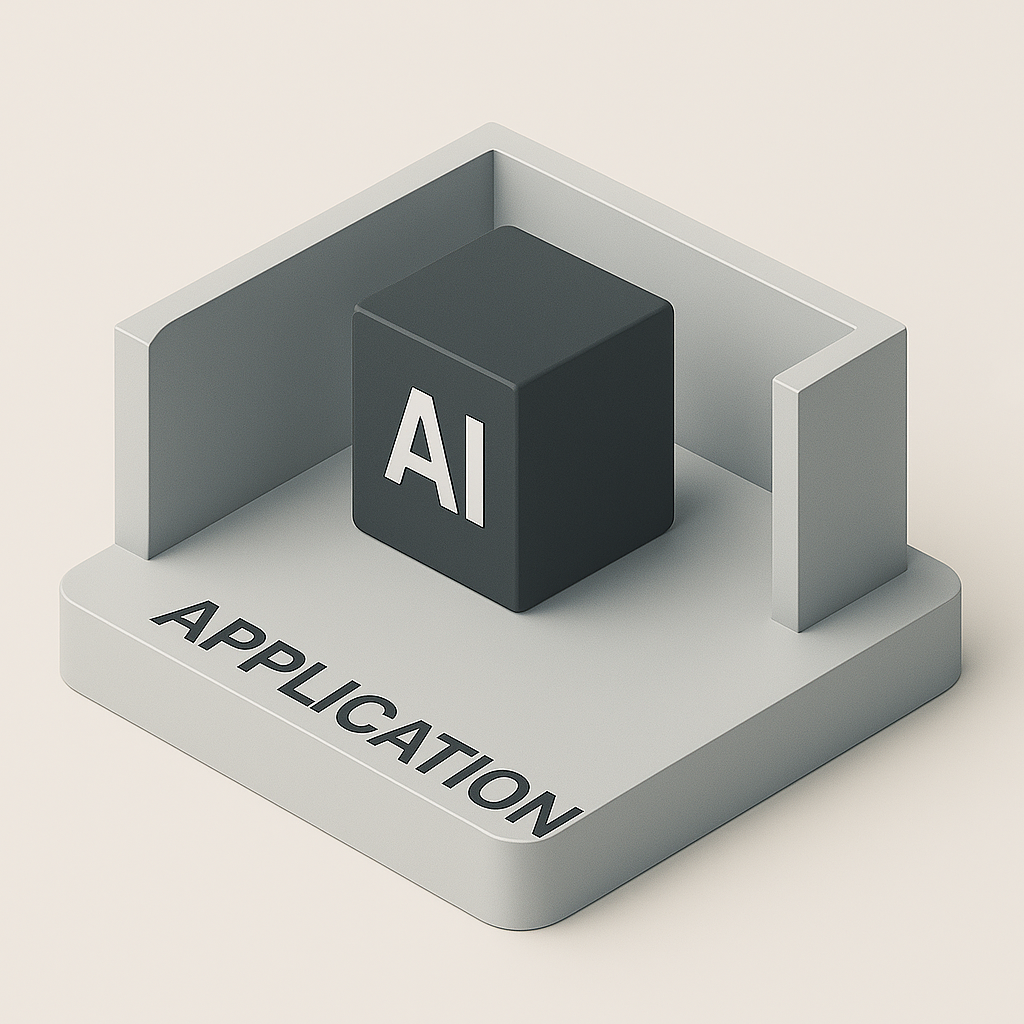
Introduction
Software engineering isn’t being replaced—it’s being rearmed. With AI, our engineers aren’t losing control; they’re gaining superpowers. But only if we lead this wave, not fear it. As CTOs, CIOs, and technology leaders, we’ve watched waves of innovation transform how software gets built: from compiled languages to cloud-native architectures, from Waterfall to Agile, from monoliths to microservices. Each wave brought friction, resistance, and ultimately progress.
We’re now facing another wave—AI-assisted development. Some view it with skepticism, conflating tool-assisted coding with careless “vibe coding.” Others are tempted to clamp down, fearing loss of control or quality. But here’s the truth: when senior engineers are empowered to use AI responsibly, they move faster without sacrificing rigor. The key is understanding the evolution—and leading it, not resisting it.
The Evolution of Engineering Tools: From StackOverflow to AI
In the early 2010s, StackOverflow revolutionized software development. For the first time, engineers had a searchable, crowdsourced repository of real-world solutions at their fingertips. Teams became more efficient. Answers were easier to find. But leadership didn’t panic—because the best engineers didn’t just copy code blindly. They used it to solve problems faster, with a deeper understanding.
Today’s AI tools are simply the next iteration of that evolution. Instead of manually searching for code snippets, AI models can now suggest context-aware code in real-time. They summarize documentation, generate unit tests, and even offer architecture diagrams. Used correctly, they eliminate hours of repetitive work, freeing engineers to focus on higher-order design decisions.
Just like StackOverflow didn’t replace good engineering judgment, AI won’t either. But it does expose a gap between engineers who understand their tools and those who blindly accept output. That’s where leadership comes in to foster a culture of discernment, not dependency.
The Role of Senior Engineers in an AI-Enabled Era
At the senior level, engineering has never been about typing; instead, it’s about thinking. Great engineers don’t just write code; they architect systems, weigh trade-offs, and bring clarity to complexity. In an AI-enabled environment, those responsibilities don’t disappear they become even more critical.
AI can generate boilerplate code, suggest syntax, and even assist in debugging. But it cannot replace human judgment. It doesn’t understand edge cases, regulatory nuances, or the long-term implications of architectural decisions. That’s where our senior engineers excel, by leveraging AI to accelerate delivery while maintaining ownership of the outcome.
We should not view AI as a substitute for engineering skills, but rather as a force multiplier for those who already possess them. When senior engineers are trained and encouraged to use AI as part of their toolkit, they can move at a pace that traditional methods can’t match, without compromising quality or accountability.
As leaders, it’s our job to protect that standard. The expectation remains unchanged: if it ships, you own it—whether it's AI or not.
Kill the Vibe Coding Myth, Focus on Mindset, Not Machine
Much of the pushback against AI in engineering stems from a single phrase: vibe coding. The term, popularized by social media, refers to relying entirely on AI to produce software without a thorough understanding of the code. It paints a picture of disengaged developers, letting the machine take the wheel—and it’s not inaccurate in some corners of the industry.
But conflating all AI-assisted development with “vibe coding” is intellectually lazy and operationally dangerous. It discourages responsible use and alienates high-performing engineers who are doing it right. Worse, it fosters a false sense of safety by avoiding the tool altogether.
The real risk isn’t the technology, it’s the mindset. Tools don’t cut corners. People do. And if our engineers are taking shortcuts, that’s a hiring, training, or leadership issue, not an indictment of AI.
This is why we need to reframe the conversation. At our organization, we use terms like AI-assisted, AI-enabled, or augmented engineering. These phrases emphasize the partnership between human expertise and machine acceleration and reinforce the cultural expectation that quality and accountability remain non-negotiable.
Bad Engineers Cut Corners, Good Engineers Ship Solutions
The presence of AI doesn’t change the fundamentals; it simply reveals them. The difference between high-performing and low-performing engineers has never been about access to tools; it’s about how those tools are used.
Good engineers validate what AI provides. They ask, "Does this make sense in the context of my application?" They debug, refactor, test, and take ownership of what gets shipped. AI helps them move faster.
Bad engineers, on the other hand, take shortcuts. Whether they’re copying from StackOverflow, using ChatGPT, or writing their own brittle code. They fail not because of AI, but because of a lack of understanding and accountability.
As leaders, we must resist the instinct to ban tools and instead focus on raising the bar. A high-performance culture doesn’t rely on policy to produce quality. It depends on people who take pride in delivering it.
Set Guardrails, Not Roadblocks
It’s tempting to solve ambiguity with restriction. However, banning AI tools won’t prevent bad code; it will only result in slower delivery and frustrated engineers. The better path is governance, not gatekeeping.
Our role is to define the guardrails:
- Code must be understood and reviewed, regardless of how it was generated.
- Testing and documentation standards remain unchanged.
- Output from AI must be explainable, maintainable, and secure.
These are not new rules. They're long-standing engineering principles. The introduction of AI requires us to reinforce it with greater urgency and clarity.
This isn’t about compliance. It’s about trust in our culture and our engineers. When engineers know that leadership encourages innovation within a disciplined framework, they rise to meet that standard.
Ban AI, Lose Talent
Organizations that restrict AI usage in software development under the guise of security, IP risk, or quality concerns may win a short-term comfort but lose long-term competitiveness.
AI-assisted development is no longer experimental. It’s mainstream. The best engineers already utilize these tools, and top talent evaluates companies based on how supportive they are of innovation. If we want to attract and retain the kind of talent that builds the future, we can’t afford to act like it’s still 2015.
Forbidding AI doesn’t eliminate risk in any way. It just shifts it underground. Engineers will often find workarounds, utilize tools outside the network, or overlook opportunities to enhance delivery velocity. That’s not risk mitigation; it’s risk mismanagement.
The path forward is open communication, training, transparency, and setting proper expectations. It is not prohibition.
Final Thoughts
We are not watching the decline of engineering, but its reinvention.
In the hands of the right people, AI is a tool, not a threat. It enables faster iteration, deeper exploration, and more ambitious problem-solving. But this only works if leaders set the tone that AI is a partner, not a replacement; that velocity cannot come at the expense of ownership; and that innovation is welcome, but responsibility is required.
As industry leaders, we have a responsibility to lead from the front. Let’s shape the next generation of engineering culture, not by resisting change, but by guiding it. This isn’t optional. This is leadership in the age of AI. If you're not enabling your engineers to use the tools of tomorrow responsibly, you're already behind the curve.



